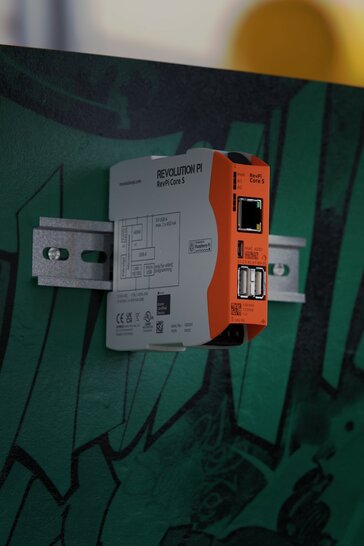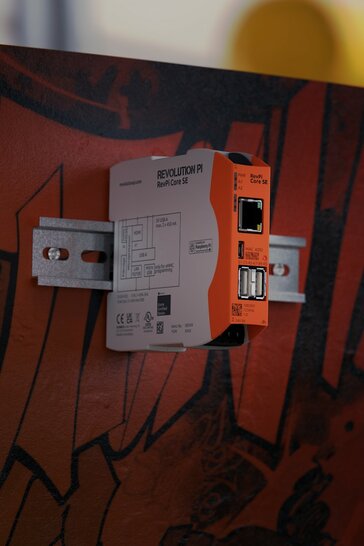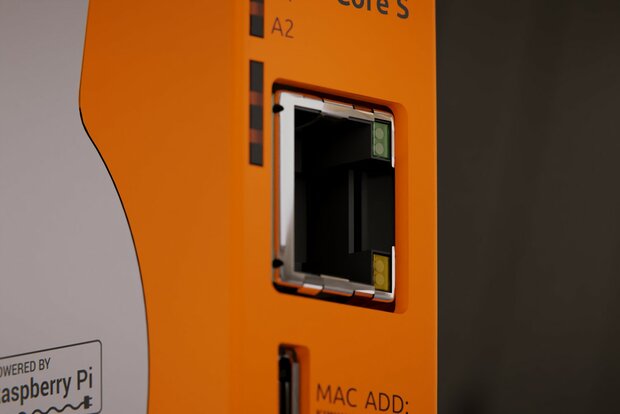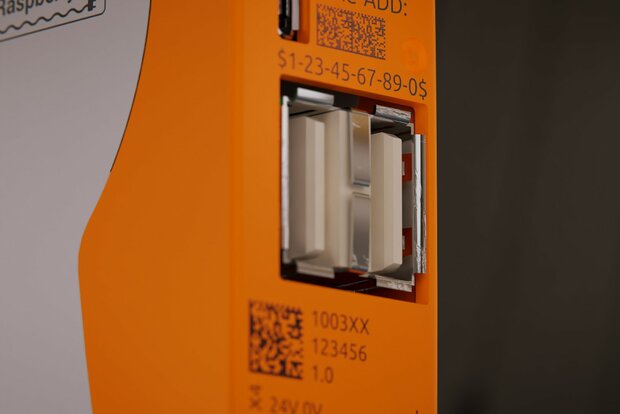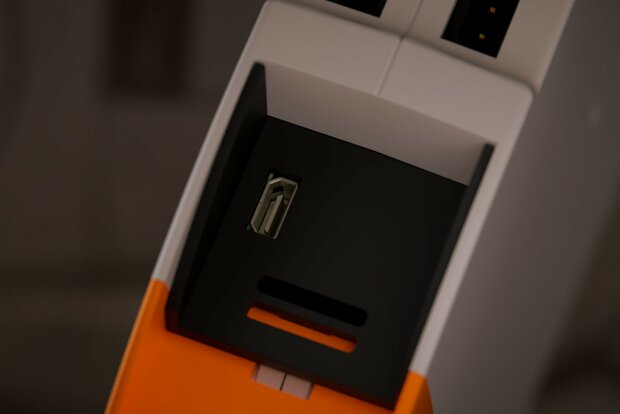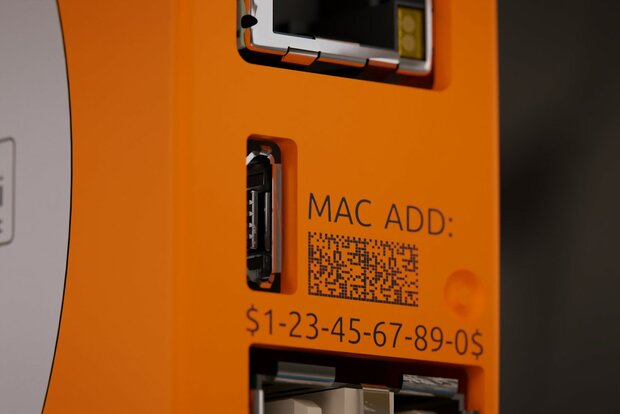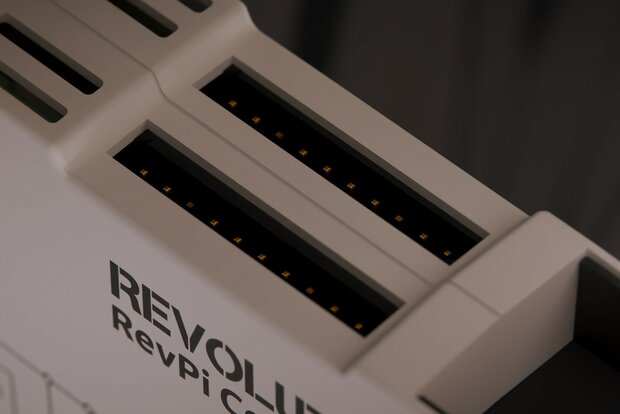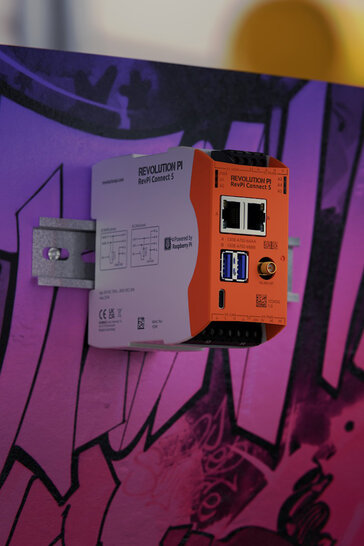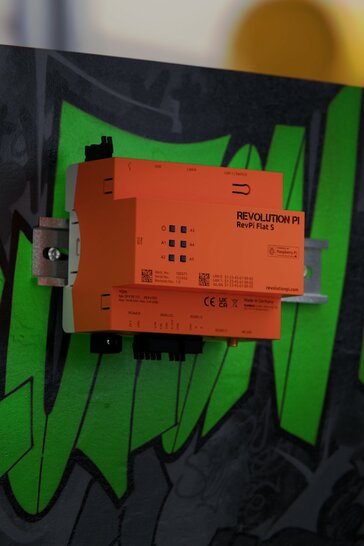Compact Base Units
The RevPi Core series is ideal for anyone looking for a space-saving, powerful, and cost-efficient platform. The devices offer all the basic functions of an industrial PC including Ethernet, USB, and Micro-HDMI ports. Check out the RevPi Connect series if you need more interfaces.
Flexibly Expandable
Thanks to its modularity, you remain flexible with the RevPi Core series. Expand the devices with our RevPi I/O modules and fieldbus gateways, and use them as robust Soft PLC, industrial IoT gateway, and much more.
Industrial Raspberry Pi
Do you simply need an industrial-grade Raspberry Pi for DIN rail mounting – for example, to collect measurement data or connect an HDMI screen including web application? Then the RevPi Core series is exactly right for you.
Important Interfaces

Technical Details
| RevPi Core S / SE | |
|---|---|
| Performance |
|
| Raspberry Pi Compute Module | Compute Module 4S |
| Processor | Broadcom BCM2711 | Quad core Cortex-A72 | 1.5 GHz |
| RAM | 1 GB LPDDR4 |
| eMMC Storage | 8, 16 or 32 GB |
| Interfaces |
|
| RJ45 Ethernet | 1 x (10/100 Mbps) |
| USB-A | 2 x (USB 2.0) |
| Micro HDMI 2.0a (4K) | ✔ |
| WLAN and BT | ❌ (available in RevPi Connect series) |
| RS485 | ❌ (available in RevPi Connect series) |
| CAN FD | ❌ (available in RevPi Connect series) |
| Compatibility with RevPi Expansion Modules |
|
| RevPi I/O Modules | ✔ (up to 10) |
| RevPi Gateways | ✔ (up to 2; 1 x per side) (Core S) ❌ (Core SE) |
| PiBridge | ✔ (2 x) |
| Additional Features |
|
| Optical Display | 3 x Bi-Color LED (2 of them freely programmable) |
| Real-Time Clock (RTC) Buffer | Double-layer capacitor (min. 24 h) |
| Check Data Sheet and Order |
|
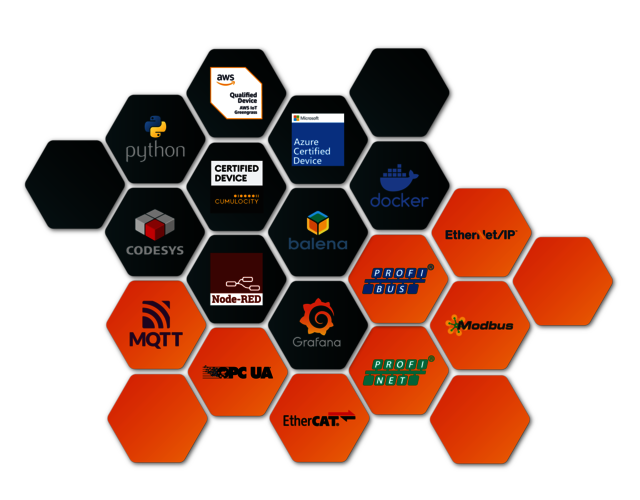
Revolution Pi Software
Maximum Software Flexibility
Revolution Pi is an open system: You can use your own software or useful pre-installed apps.
Thanks to the comprehensive protocol support, you can flexibly integrate Revolution Pi into networks.
The Raspberry Pi OS-based operating system includes a real-time patch in the kernel.
This lets you transfer your Raspberry Pi prototypes, while benefiting from industrial real-time capability.
Order Your RevPi Now
Order your devices across Europe through our online shop or via our global sales partners.
Planning a larger project? Our experts will work with you to develop the optimal solution: Request consultation
Not the Right Device?
Explore more Revolution Pi models and find the ideal device for your project.
